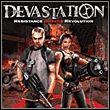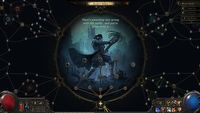„Eminem” with license to kill. In Devastation, we fought against heartless megacorporation
There are some games that at the time of their release don't arouse much enthusiasm, but years later they begin to gain value. One of them is Devastation, an FPS with a protagonist who could boldly enter a contest for Eminem's double.
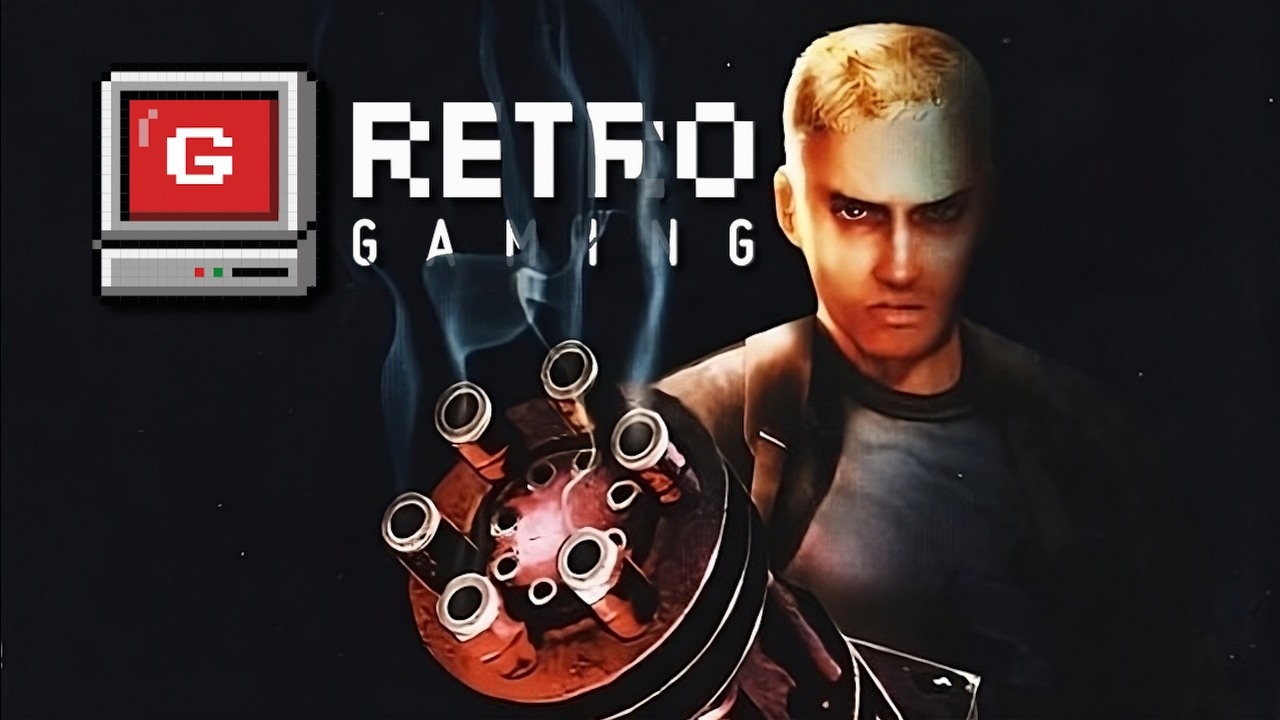
In the history of the video game industry, there is no shortage of stories about projects that wouldn't have been possible if it were not for the collapse of other development studios behind them. One such story concerns Devastation, an FPS that emerged from the ashes of a never-completed expansion pack for Unreal Tournament. Let's check out what Digitalo Studios was trying to conquer the world with back in the day.
From "Eminem" through a dystopian world
Devastation attracted attention already on the store shelf. The game's main character, Flynn Haskell, looked surprisingly similar to Marshall Bruce Mathers III, known to the general public as Eminem. While it wasn't stated outright, it's easy to envision a conspiracy theory existing in the world, suggesting that the protagonist was actually, if not Eminem himself, then... his clone, or one of them.
Devastation transported us to a dystopian future universe. In 2075, the war-ravaged Earth is ruled with an iron fist by the megacorporation Grathius, which doesn't tolerate any dissent and suppresses any manifestations of it with the help of its "police force." To make things even worse, the megacorporation possesses technology that enables it to use nanomachines for cloning people (didn't I say so?), which essentially makes its military potential limitless.
As you can easily guess, in a society inhabiting such a world, something had to "crack" sooner or later. The main character, embodying widespread discontent and representing the resistance movement, declared war on Grathius and then started disrupting its plans across the globe, from San Francisco to Taiwan and Japan.
"Eminem" wasn't alone in this, as he was joined along the way by other rebels, with varying skills and preferred arms; for instance, Tara is a technology specialist, while Gus felt like a fish in water as bullets whizzed around him.
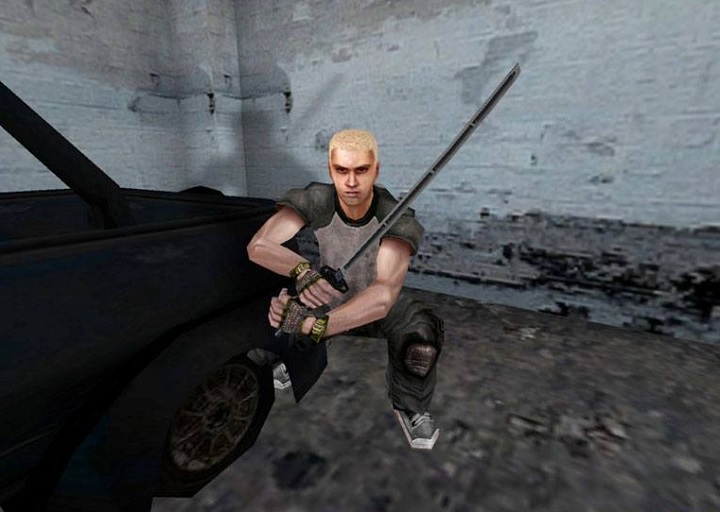
Shoot first, ask questions later
Devastation surprised at the beginning with the possibility of choosing the gameplay style in the story campaign. The game allowed us to choose between arcade mode or simulation mode. In theory, the first one was intended to have faster gameplay with a focus on dynamic and impressive action, whereas the second one was meant to be slower, concentrating on more tactical maneuvers. In practice, however, the differences between them were primarily due to the number of weapons and gadgets carried by Haskell, which in the first case was unlimited, and in the second - quite the opposite.
The campaign itself was divided into missions that took us to different, yet equally gray, drab, and gloomy locations. While the first part of the game was linear, in the later stage of the gameplay Flynn and his entourage acquired a cloning machine. After that, the devs focused on non-linear missions, where the rebels' objective was to destroy the enemy's cloning machine; the situation was complicated by the fact that their opponents had the exact same goal.
On the battlefield, we made use of a wide range of weapons and gadgets. Among them, one could find melee weapons, pistols, rifles, and grenades. We also had bottles and boards at our disposal. Moreover, selected guns had a second firing mode, which further expanded our range of possibilities.
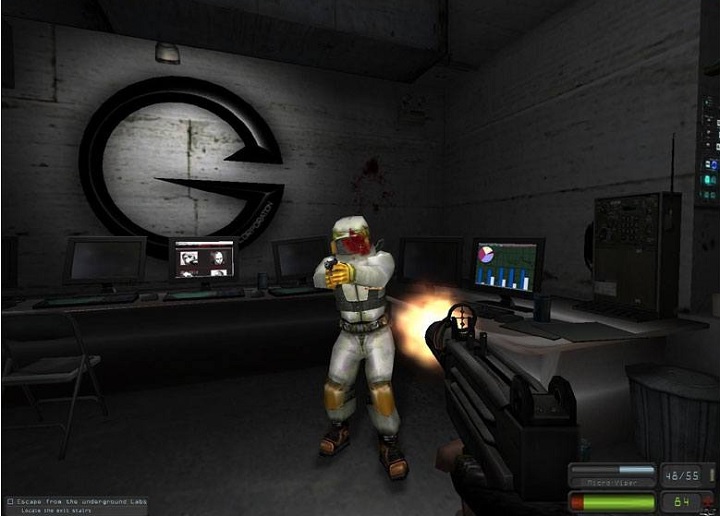
Strength in numbers
A special mention is owed to the companions we brought along. The game allowed us to give them simple commands, forcing them to attack, defend, follow the protagonist, and hold their position. Unfortunately, their presence didn't make Devastation a worthy competitor for Ghost Recon or other Rainbow Six games.
Haskell's team members weren't exactly the brightest, and they often reacted inappropriately to the situation, just standing there while bullets rained down on them. As if that wasn't enough, the brave rebels often blocked each other, which forced us to "babysit" them. On the other hand, when the allies were shooting, they were doing it quite accurately. Given that the opponents were also not very intelligent, in the end, the other rebels could be considered useful on the battlefield.
Something for everyone
The single player campaign isn't all that Devastation had to offer. An extensive multiplayer mode was created for the game, featuring the traditional deathmatch (called Streetwar) and capture-the-flag modes, along with a refreshing addition in the form of the Territories module. This refers to a game mode where the rebel team needed to retrieve codes to deactivate the laser barriers around enemy bases and then destroy the enemy's respawn point.
Moreover, the game offered support for mods. As you can see, the devs did their homework and "ticked off" all the conditions necessary to keep their project alive as long as possible after the launch.
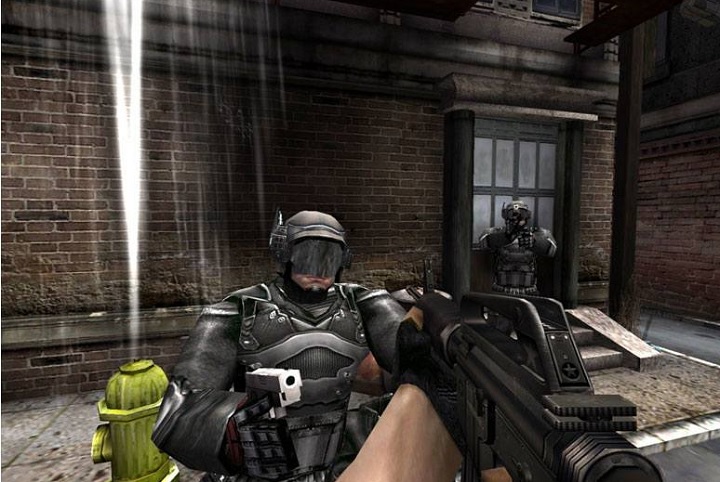
The future painted in dark colors
The vision of the future that developers presented to us in Devastation was quite peculiar. Even though the game was set in 2075, most aspects of the game world appeared as if they were directly from the year 2000. However, there were some exceptions, led by the futuristic uniforms of Grathius's soldiers.
As the title obliged, the devs allowed us to "destroy" the environment. While it didn't reach the level of destruction that Red Faction could boast, Unreal Engine enabled the ruin of many objects, especially various devices. Others, such as some furniture, could be moved.
That wasn't something amazing, but it was still cool
Devastation was released on personal computers in the spring of 2003. The game was received as average at best by reviewers, with an average score of 62/100 from industry media, according to Metacritic. Over the years, however, some gamers have come to appreciate this title; in fact, there were even voices saying that it was "the best dystopian game ever made" and at the same time "the best game no one played in 2003."
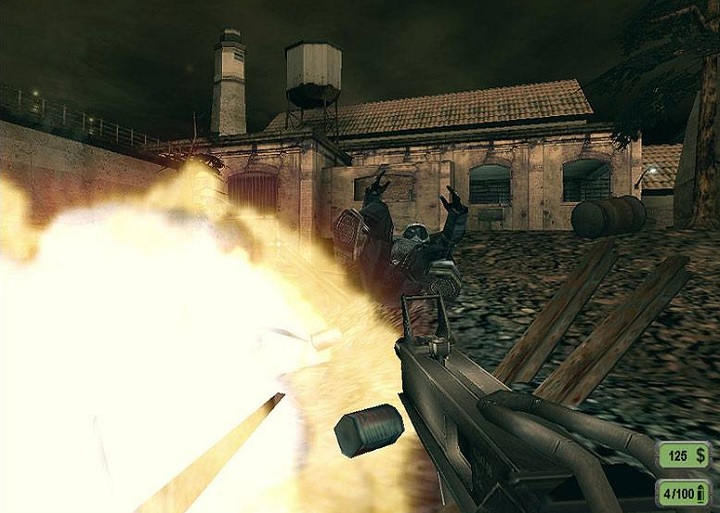
How to play Devastation today?
Unfortunately, at the time of writing these words, Devastation isn't available on Steam or GOG.com. A used copy of this game, however, costs from 2 to 5 bucks. It's important to mention that the most affordable way to get the full version is the one that was once included in Play magazine, which served as the first introduction to the title for many players.
What happened next?
Devastation was the first and last title developed by Digitalo Studios. Arush Entertainment, responsible for its publishing, lasted a bit longer. After Devastation, the company also released games in the Hunting Unlimited and Playboy: The Mansion series. Nonetheless, in 2005 its owner - HIP Interactive - went bankrupt, burying both it and the brands in its portfolio.
- There is a surprising story behind one of the more colorful FPSs in history. No One Lives Forever' success was influenced by the „Bond” problem
- A failed revolution. Chrome 2 was supposed to refresh the FPS genre
- The end of cases in CS2? Valve's new move suggests a quiet revolution in the game's economy
0

Author: Christian Pieniazek
Started working with Gamepressure.com in August 2016. Although the Game Encyclopedia has been his pride and joy from the beginning, he also writes for the Newsroom and the Editorial section. Gained professional experience through a now-defunct service, in which he worked for almost three years. Graduated in Cultural Studies at the AGH University of Krakow. Runs his own business, jogs, cycles, loves mountain hiking, is a fan of nu metal, is interested in space, and of course, enjoys playing games. Feels best in action games with an open world and RPGs, although won't turn down good racing or shooting games.
Latest News
- End of remote work and 60 hours a week. Demo of Naughty Dog's new game was born amid a crunch atmosphere
- She's the new Lara Croft, but she still lives in fear. Trauma after Perfect Dark changed the actress' approach to the industry
- „A lot has become lost in translation.” Swen Vincke suggests that the scandal surrounding Divinity is a big misunderstanding
- Stuck in development limbo for years, ARK 2 is now planned for 2028
- Few people know about it, but it's an RPG mixing Dark Souls and NieR that has received excellent reviews on Steam, and its first DLC will be released soon
